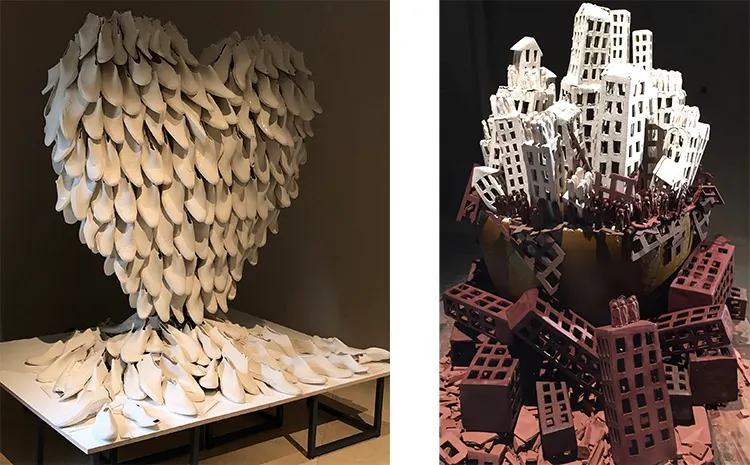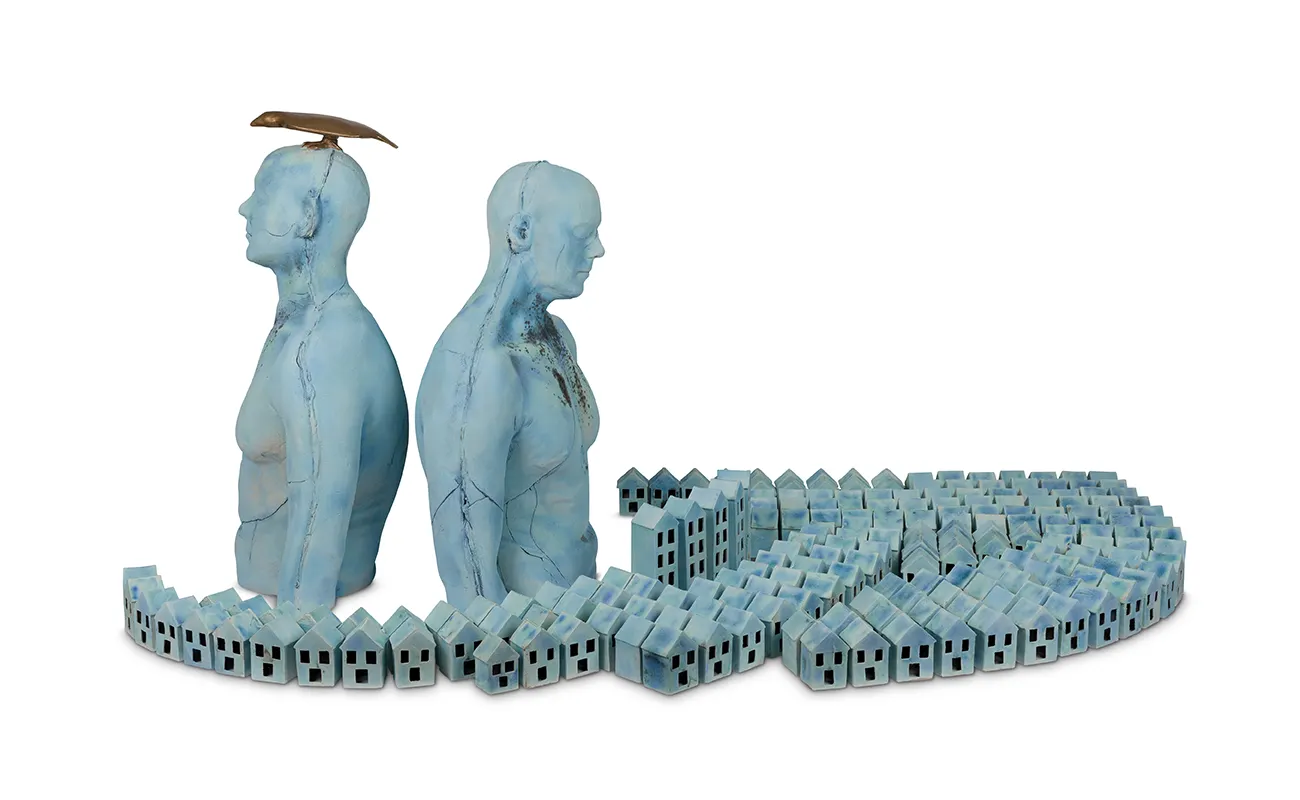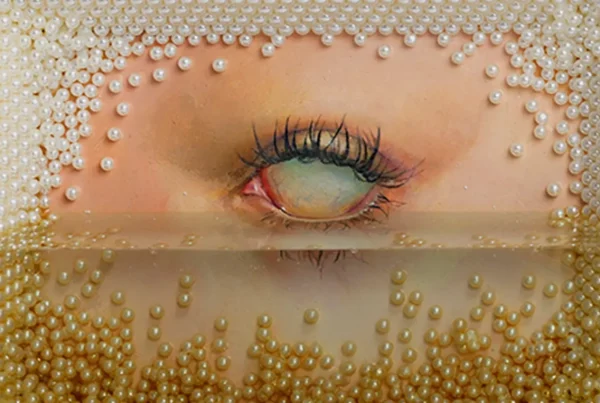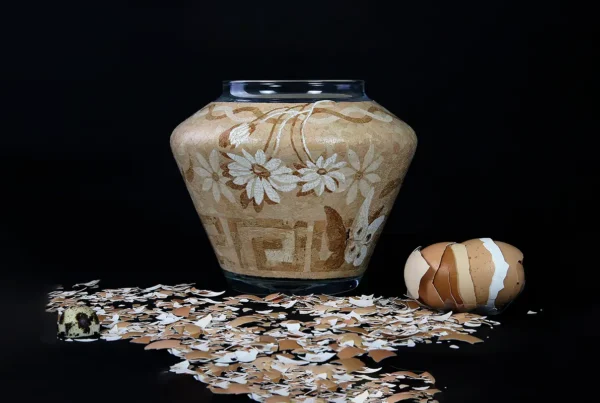“I realised, at that moment, you can do what you like when you want to make or create something… it’s entirely your own choice.”
A Life Reimagined: From Nursing to Ceramic Art
Eleanor Swan’s artistic journey is one of transformation, resilience, and an unshakable need to tell stories through her work. Hailing from Ireland, she operates as a full-time ceramic artist from her studio at Russborough House, a stately home nestled in the shadow of the Wicklow Mountains. The historical grandeur of the house, along with its lush surroundings, serves as both inspiration and backdrop for her creative process. Yet, Swan’s path to becoming an artist was anything but conventional.
Growing up in the 1970s, she faced limited career opportunities as a young woman. Art was dismissed as an impractical pursuit, and her father insisted she find a “proper job.” She became a nurse, dedicating 25 years to the profession, eventually managing the emergency operating theatre in a major Dublin hospital. While she excelled in the field and found fulfillment in caring for others, a sense of absence lingered—a creative void she had yet to fill. It wasn’t until she experienced a period of illness that she confronted a life-altering question: If I were to die tomorrow, what would I regret most? The answer was immediate—never having pursued art.
That revelation set everything into motion. Swan credits her nursing career for shaping her as an artist, providing her with discipline, an intimate understanding of human vulnerability, and a deeply ingrained sense of empathy. These qualities translate directly into her ceramic practice, where storytelling remains at the heart of her work. Through clay, she captures narratives that reflect the complexities of life, from personal reflections to broader societal issues.
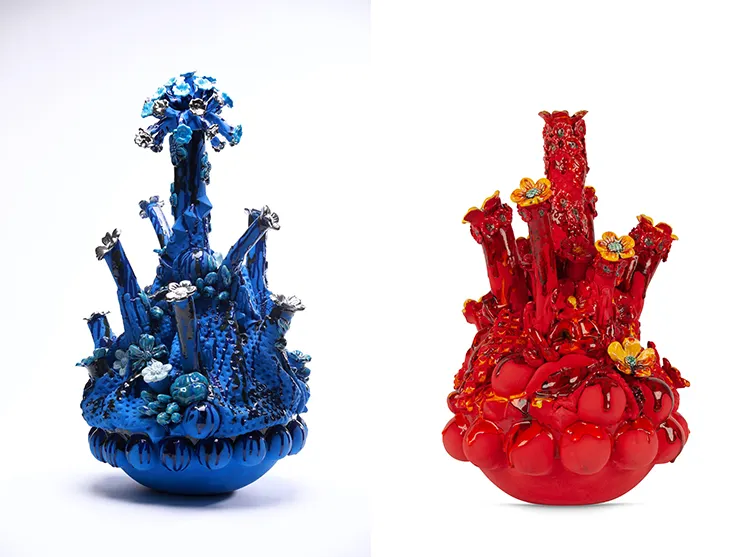
Eleanor Swan: Moments of Clarity and Artistic Awakening
Swan’s early creative inclinations were sparked by an unlikely source—a childhood memory of watching her teacher knit a pink cardigan when she was 7 years old. The process fascinated her, but it was the realization that the teacher had intentionally omitted buttonholes that left a lasting impression. That moment crystallized an important truth: creativity has no rules. She carried this mindset forward, resisting trends and external expectations, choosing instead to create work that felt authentic to her.
Throughout her years as a nurse, she remained engaged in creative practices, experimenting with painting, knitting, stained glass, weaving, and basket-making. Despite these artistic outlets, she felt a growing need for formal education. It wasn’t until she made the pivotal decision to leave her nursing career behind that she stepped into the world of professional art. Enrolling at the National College of Art and Design (NCAD) in Dublin marked a turning point. She initially intended to pursue painting but was encouraged to explore unfamiliar disciplines. On a whim, she spent three days in the ceramics department, and the experience changed everything. The moment she touched clay, she knew she had found her true medium.
The shift to ceramics was more than just an artistic decision—it was a moment of deep personal clarity. Working with clay allowed her to think and create in three dimensions, opening up endless possibilities for storytelling. The tactile nature of the medium resonated with her in a way that no other material had. That passion remains undiminished, with her ideas constantly evolving as she pushes the boundaries of what ceramics can express.
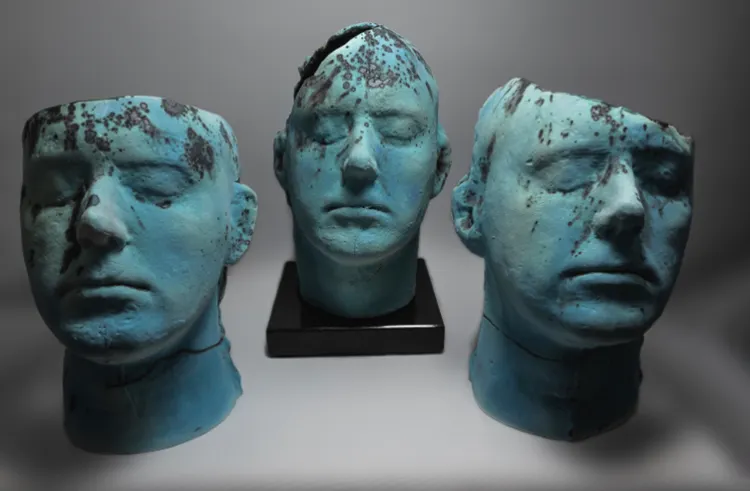
Exploring Social Narratives Through Clay
Swan’s artistic practice is deeply rooted in contemporary social issues. Her work serves as both a personal and political commentary, addressing topics such as housing crises, migration, sustainability, and the perception of identity. She draws inspiration from current events, often listening to the radio while working in her studio, absorbing stories that later manifest in her art. Rather than simply creating aesthetically pleasing objects, she seeks to provoke thought and discussion.
One of her most meaningful pieces, Just Listen, directly reflects her experience in nursing. This figurative ceramic work critiques the often impersonal relationship between doctors and patients. During her years in the hospital, she observed how doctors would discuss cases at a patient’s bedside, sometimes speaking over elderly patients as if they weren’t present. The disconnect between the healer and the vulnerable individual in need of care was something she found deeply troubling. Through Just Listen, she highlights the importance of human connection and the fundamental need for patients to feel heard.
Swan also enjoys working within thematic frameworks for exhibitions, viewing them as creative challenges that push her beyond her comfort zone. Whether tackling large-scale installations or intimate sculptural pieces, she continuously seeks to stretch the boundaries of ceramic storytelling. Her ability to fuse craftsmanship with conceptual depth is what makes her work so compelling, ensuring that each piece carries weight beyond its physical form.
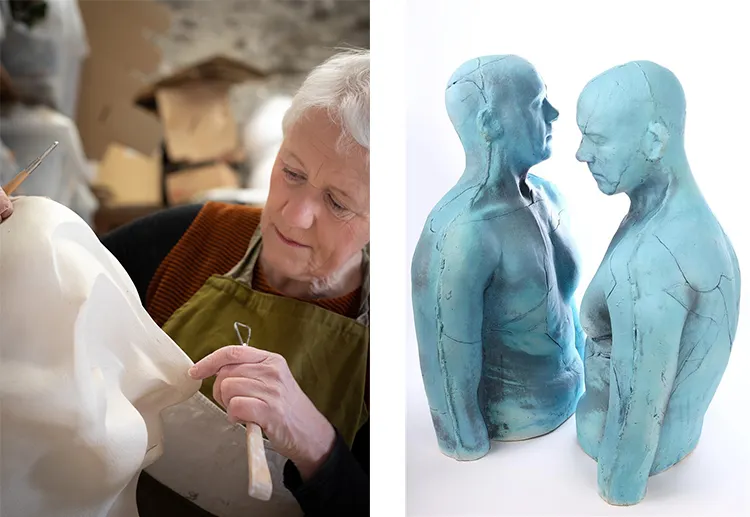
Eleanor Swan: Redefining Art’s Accessibility
Swan’s artistic ambitions extend beyond her own studio. A significant aspect of her practice involves exploring how art can be made more accessible, particularly for visually impaired audiences. This interest led to a research project during her Master’s degree, in which she examined how museums and galleries engage with tactile art experiences.
Her research culminated in a series of large-scale ceramic heads inspired by the distorted portraiture of Francis Bacon. These pieces were designed to be experienced through touch, offering an alternative way of engaging with art beyond visual perception. This body of work gained recognition, leading to solo exhibitions in Dublin and later in Taiwan at the New Taipei City Ceramic Museum. The impact was so profound that the museum established a permanent tactile art area, where Swan’s work remains on display.
Despite the success of this initiative, she has encountered resistance from many institutions reluctant to embrace the concept. She believes fear and rigid traditions often hold galleries back from implementing more inclusive practices. Her ultimate goal is to see more museums adopt tactile art in a meaningful way, breaking down barriers for audiences who experience the world differently. For Swan, art is not just about creation—it’s about connection, accessibility, and ensuring that narratives, whether sculpted in clay or spoken through activism, reach as many people as possible.
You can follow Eleanor on Instagram: https://www.instagram.com/eswanceramics/
